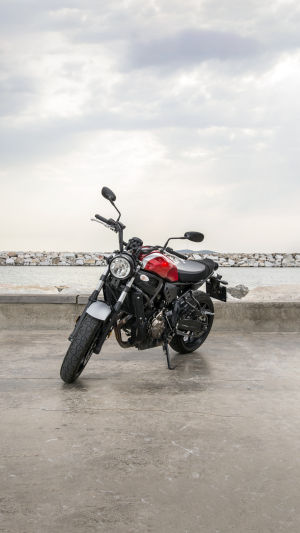Motorcycles, driven by gasoline engines and steered through handlebars, are two- or three-wheeled vehicles known for their lightweight, agility, and swift travel, widely used in patrols, transport, and sports and broadly classified into street bikes, road racing motorcycles, off-road bikes, cruisers, and touring bikes.
People often use terms like "prince," "pasa," and "Gao said" in motorcycle communities, but these are just colloquial terms and do not exist in the international classification of motorcycle models. If you're a motorcycle novice, this content will expand your knowledge.
1. Street Bikes: Unveiling mechanical beauty, these bikes lack the streamlined fairing of racing bikes, offering agile handling and a blend of sportiness and comfort, making them ideal for commuting in cities. Examples: Honda CB400, CFMOTO 650NK, Kawasaki Z1000.
2. Racing Bikes: Clad in a streamlined fairing, they exude elegant lines, feature separate low handlebars, and aggressive riding positions, ideal for high-speed travel. Examples: BMW S1000RR, Honda CBR1000RR, Yamaha R1, Kawasaki NINJA.
3. Cruisers: These bikes are often called "prince" locally and do not have an official international title. Admired by social elites in the 90s in places like Hong Kong and Taiwan, they are now internationally classified as cruisers regardless of engine size. Examples: Harley-Davidson, Honda DN-01, Indian Scout.
4. Touring Bikes: Tailored for highways, these bikes ensure comfort during high-speed travel and feature long-haul configurations like windscreens, side panniers, heated handlebars, and sound systems. Examples: Honda Gold Wing, BMW K1600GT, CFMOTO 650GT.
5. Adventure Bikes: For those seeking more thrill than touring bikes, these bikes enhance suspension systems, sacrificing some leisure features to enable road and off-road adventures. Represented by BMW R1200GS, KTM1290, Zongshen RX4.
6. Off-road Motorcycles: Lighter and purer than adventure bikes, these models feature higher seats, long-travel suspensions, and minimal adornments, emphasizing lightweight and powerful outputs for easy maneuvering over obstacles. Examples: Honda CRF450, KTM350.
After weathering a century, motorcycles advanced towards newer, faster, and safer directions. The modern motorcycle industry adopts advanced technologies like the environmentally friendly engine seen in Harley-Davidson's FLHRC-1 model from 1998, becoming pioneers in 21st-century motorcycles.
Cutting-edge technologies such as optical communication, radar distance control systems, electronic map guidance systems, and sound-wave electronic silencing systems refine modern motorcycles, making them more perfect and awe-inspiring.
The world of motorcycles, with its diverse types catering to various needs, showcases a blend of tradition and innovation. From the elegant street bikes to the adrenaline-inducing off-road machines, each category reflects the evolving desires of riders globally.
As these vehicles evolve with cutting-edge technologies and eco-friendly advancements, they captivate enthusiasts worldwide. With nearly 130 years of history, motorcycles have endured and thrived, continually pushing boundaries for speed, safety, and environmental consciousness. This rich legacy and modern advancements ensure a thrilling and responsible future for the motorcycle industry.





